Are you wondering how long your roof will last? Roof longevity is a crucial consideration for homeowners, especially when weighing options for roof repairs or roof replacements. In this comprehensive 2024 guide, we’ll delve into the lifespan of asphalt shingles compared to other roofing materials. We’ll provide you with detailed information, backed by data and research, to help you make an informed decision. Understanding the factors that affect roof longevity, the impact of weather conditions, and the importance of proper attic ventilation are just a few aspects we’ll cover.
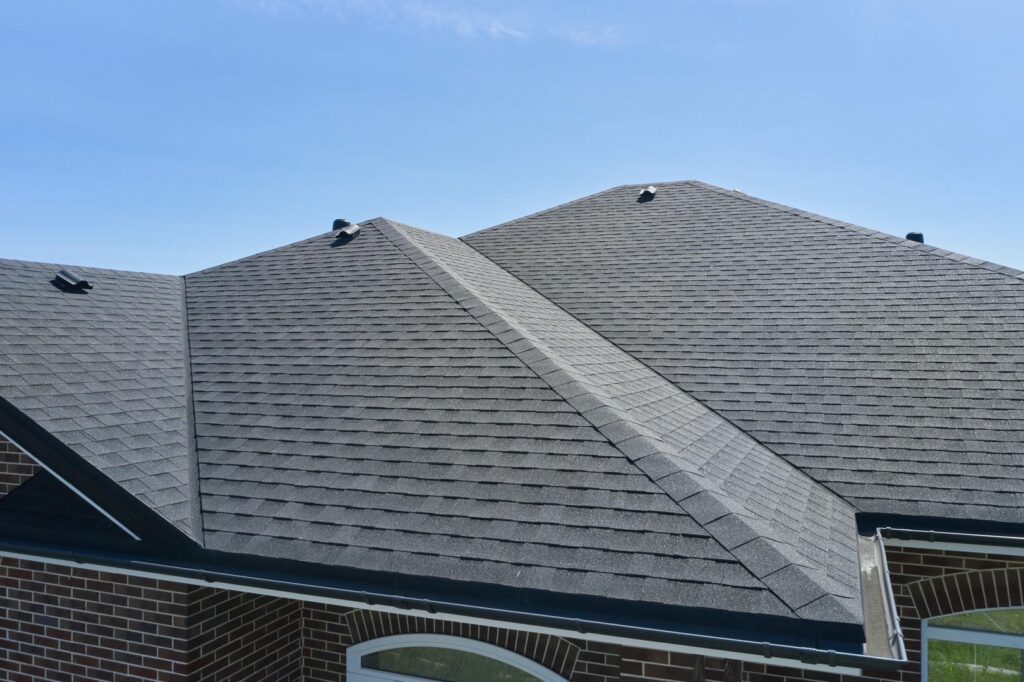
What Factors Affect Roof Longevity?
Several factors contribute to the roof’s lifespan. Understanding these elements can help homeowners make informed decisions about roofing materials and maintenance practices to maximize their roof’s lifespan.
- Climate and Weather Conditions: Severe weather, such as heavy rainfall, snow, and strong winds, can significantly impact a roof’s life expectancy. For instance, asphalt shingles are durable but may not last as long in areas with frequent severe weather.
- Sun Exposure: UV rays and constant sun exposure can cause roofing materials to deteriorate faster. In sunny climates, roofs, especially those with dark colors that absorb more heat, may require more frequent repairs.
- Quality of Materials: The quality of the roofing materials plays a crucial role in determining how long a roof lasts. High-quality materials, like premium shingles and durable metals, tend to have a longer life expectancy.
- Installation Quality: Proper installation is vital for a roof’s durability. Improper installation can lead to frequent repairs and reduce the roof’s overall lifespan.
- Maintenance Practices: Regular maintenance, including annual roof inspections and cleaning gutters, can prevent damage and extend the roof’s life.
- Attic Ventilation: Proper attic ventilation prevents overheating and helps maintain the roof’s integrity. Poor ventilation can lead to overheated shingles and reduced energy efficiency.
- Roof Slope and Design: The slope and design of a roof can affect its ability to shed water and withstand wind. Flat roofs might have different longevity compared to steeply sloped roofs.
- Type of Roof: Different roofing materials have varying lifespans. Asphalt roof, metal roofs, slate tiles, and wood shakes each offer unique benefits and longevity.
Average Lifespan of Asphalt Roof
Asphalt shingle roofs are a popular choice for many homeowners due to their cost-effectiveness and relatively easy installation process. Let’s dive into the specifics of different types of asphalt shingles and their respective lifespans.
Three-Tab Shingles
Three-tab shingles are the most basic type of asphalt shingles. They are designed to look like three separate pieces, but they are actually a single strip. On average, three-tab asphalt shingles last between 15 to 20 years. The lifespan can be influenced by factors such as the local climate, the quality of the installation, and how well the roof is maintained.
Regular maintenance is crucial for maximizing the lifespan of three-tab shingles. This includes routine inspections for signs of wear and tear, such as curling or missing shingles. Prompt repairs are essential to prevent minor issues from escalating into more severe damage. Additionally, keeping the roof clean and free of debris can help preserve the shingles’ integrity.
Architectural Shingles
This type of shingles, also known as dimensional shingles, offer enhanced durability and aesthetic appeal compared to three-tab shingles. These shingles are thicker and have a layered construction, giving them a more textured and three-dimensional appearance. Architectural shingles typically last between 25 to 30 years, with some high-quality options boasting lifespans of up to 40 years.
The increased durability of architectural shingles makes them a popular choice for homeowners seeking a balance between longevity and style. Their layered design not only enhances the roof’s visual appeal but also provides better protection against the elements.
Premium Shingles
Premium shingles represent the top tier of asphalt shingle options. These shingles are designed for maximum durability and often come with extended warranties. Premium shingles can last between 30 to 50 years, making them a long-term investment for homeowners who prioritize longevity and performance.
The higher upfront cost of premium shingles is offset by their extended lifespan and superior protection. These shingles are often reinforced with advanced materials and technologies, enhancing their resistance to harsh weather conditions and wear. Investing in premium shingles can significantly reduce the need for frequent repairs and roof replacements over the years.
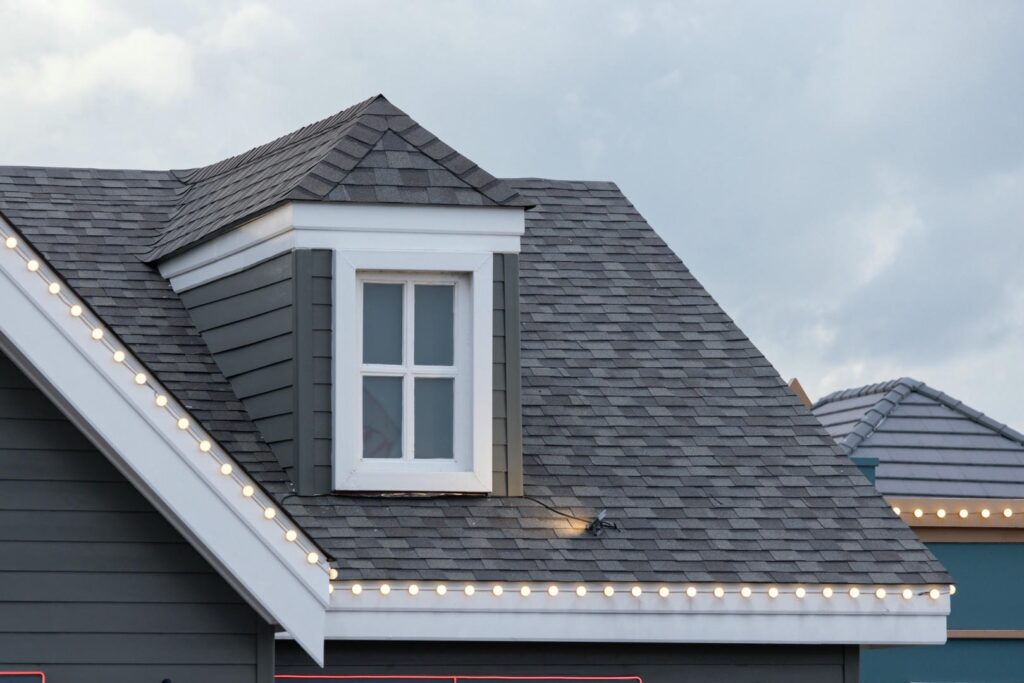
Comparing Asphalt Shingles Roof with Other Roofing Materials
When we speak about how long can roof last, different roofing materials offer varying lifespans, benefits, and drawbacks. Comparing asphalt shingles with other popular roofing options can help homeowners choose the best material for their needs.
Metal Roofs: Longevity and Durability
Metal roofs are known for their longevity and durability. They are available in various styles and can mimic the look of other roofing materials, such as shingles or tiles.
- Lifespan: Metal roofs can last between 40 to 70 years, depending on the type of metal and installation quality.
- Benefits: Metal roofs are resistant to fire, insects, and rot. They reflect heat, making them energy-efficient in hot climates.
- Drawbacks: Metal roofs can be more expensive upfront than asphalt shingles. They may also require specialized installation.
Slate Roofs: Premium Lifespan
Slate roofs are among the longest-lasting roofing materials, offering a timeless and elegant appearance.
- Lifespan: Slate roofs can last 75 to 100 years or more, making them a premium choice for longevity.
- Benefits: Slate is highly durable, resistant to fire, and has a natural beauty that enhances the look of any home.
- Drawbacks: Slate roofs are heavy and may require additional structural support. They are also more expensive and require skilled installation.
Wood Roof: Natural Beauty
Wood shingles and shakes provide a natural and rustic appearance, commonly used in traditional and historic homes.
- Lifespan: Wood shingles and shakes typically last between 20 to 40 years, depending on the wood type and maintenance.
- Benefits: They offer natural insulation and a unique aesthetic appeal. Cedar and redwood are popular choices due to their natural resistance to decay.
- Drawbacks: Wood roofs require regular maintenance to prevent moss, mold, and insect damage. They are also susceptible to fire unless treated with a fire retardant.
Clay and Concrete Tiles: Durable Choices
Clay and concrete tiles are known for their durability and resistance to severe weather conditions.
- Lifespan: Clay and concrete tiles can last 50 to 100 years or more, making them a long-lasting roofing option.
- Benefits: These tiles are resistant to fire, rot, and insects. They also offer excellent insulation properties and are suitable for hot climates.
- Drawbacks: Clay and concrete tiles are heavy and may require additional structural support. They can also be more expensive and require skilled installation.
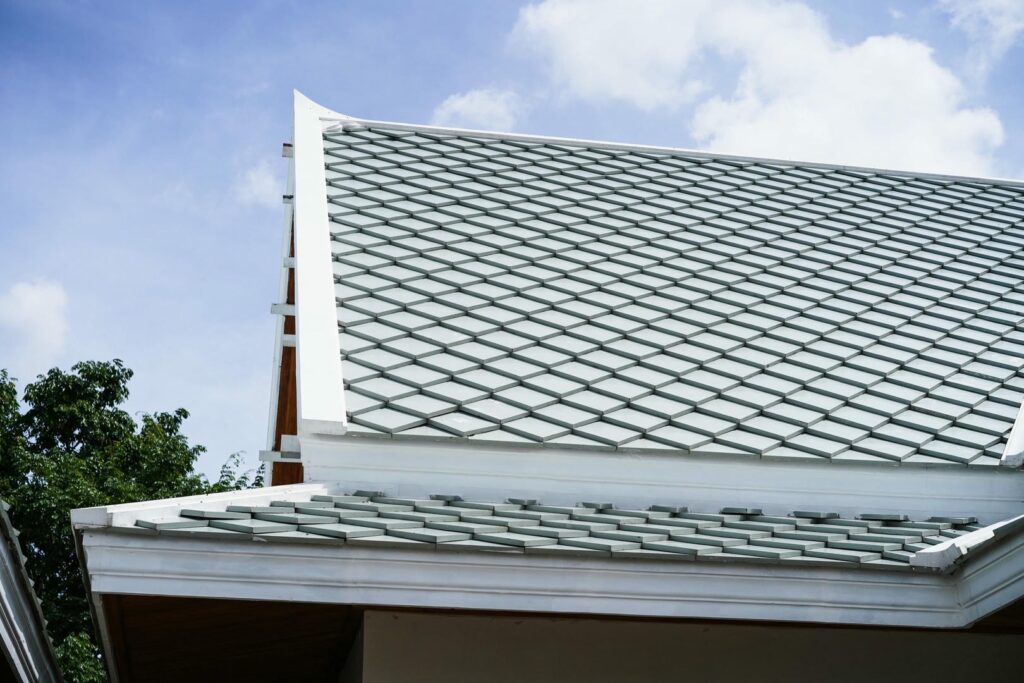
Impact of Weather Conditions on Roof Lifespan
Weather conditions play a significant role in determining the lifespan of a roof. Different climates present unique challenges that can affect the durability and longevity of roofing materials. Understanding how weather impacts your roof can help you take proactive measures to protect it.
Cold Climates
Roofs in cold climates are exposed to snow, ice, and freezing temperatures. These conditions can cause shingles to become brittle and prone to cracking. Ice dams, which form when snow melts and refreezes at the roof’s edge, can lead to water infiltration and damage. Regular inspections and proper attic ventilation are essential to prevent these issues.
Hot Climates
In hot climates, average roof is exposed to intense sun exposure and high temperatures. UV rays can degrade roofing materials, causing them to lose their protective granules and become more susceptible to damage. Dark-colored roofs absorb more heat, which can lead to overheating and accelerated wear. Choosing light-colored roofing materials and ensuring proper attic ventilation can help mitigate these effects.
Windy and Storm-Prone Areas
Roofs in regions prone to high winds and storms face additional challenges. Strong winds can lift and tear shingles, leading to roof leaks and water damage. Impact-resistant roofing materials, such as metal or architectural shingles, are recommended for these areas. Regular inspections after storms are crucial to identify and repair any damage promptly.
Sun Exposure and Roof Longevity
Sun exposure is one of the primary factors affecting a roof’s lifespan. Prolonged exposure to UV rays can lead to the degradation of roofing materials, especially asphalt shingles. Here’s how sun exposure impacts different types of roofs and what homeowners can do to mitigate its effects.
- Asphalt Roofs: Asphalt shingles can become brittle and lose their protective granules due to prolonged sun exposure. This can shorten their lifespan and lead to more frequent repairs.
- Metal Roofs: Metal roofs are generally more resistant to UV rays. They reflect sunlight, which helps in reducing heat absorption and increasing energy efficiency.
- Wood Shakes and Shingles: Sun exposure can cause wood roofs to dry out and crack. Regular treatment and maintenance can help protect wood roofs from UV damage.
- Clay and Concrete Tiles: These materials are highly resistant to UV rays. They maintain their integrity and appearance even after prolonged sun exposure.
Understanding the factors that affect a roof’s life span and the benefits of different roofing materials can help homeowners make informed decisions about their roofing needs. By choosing the right materials, ensuring proper installation, and maintaining the roof regularly, homeowners can enjoy a durable and long-lasting roof.
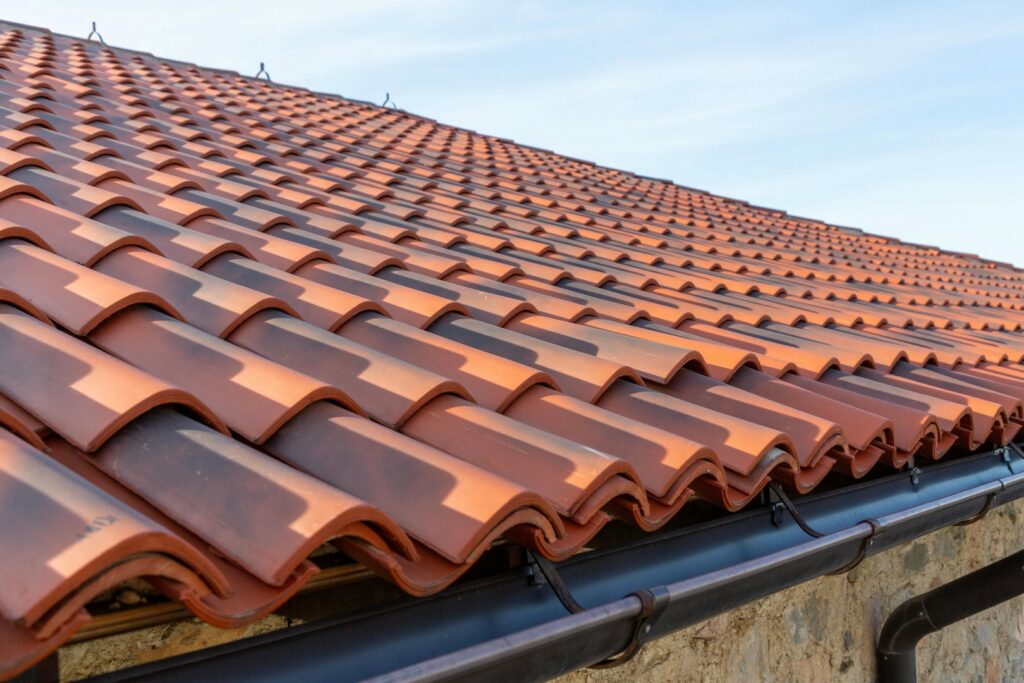
Importance of Proper Attic Ventilation
Proper attic ventilation is a critical factor in maintaining the longevity of a roof. It plays a significant role in preventing damage to roofing materials and enhancing the overall energy efficiency of the home. Let’s explore why attic ventilation is essential and how it impacts different types of roofs.
Avoiding Overheated Shingles
One of the main reasons for attic ventilation is to prevent overheating of shingles. When the attic is not properly ventilated, it can trap heat, causing the temperature to rise significantly. This excessive heat can lead to several issues:
- Asphalt roofs: Overheated shingles can become brittle, leading to cracking and premature aging. This reduces their lifespan and increases the likelihood of roof leaks.
- Metal Roofs: While metal roofs are more resistant to heat, poor ventilation can still cause the attic to overheat, affecting the indoor temperature and energy efficiency.
- Wood Shingles and Shakes: Heat can dry out wood shingles and shakes, making them more prone to cracking and splitting.
Types of Ventilation Systems
There are various ventilation systems available, including ridge vents, soffit vents, and gable vents. A combination of intake and exhaust vents ensures adequate airflow, preventing moisture buildup and heat accumulation. Consulting with a roofing professional can help determine the best ventilation system for your home.
Proper Ventilation and Energy Efficiency
Proper attic ventilation helps in maintaining a balanced temperature inside the attic, which directly affects the energy efficiency of the home.
- Temperature Regulation: Adequate ventilation ensures that hot air is expelled from the attic during the summer, reducing the load on air conditioning systems and lowering energy bills.
- Moisture Control: In colder climates, proper ventilation prevents the buildup of moisture in the attic, which can lead to mold growth and wood rot. This is especially important for wood roofs and other materials susceptible to moisture damage.
- Roofing Materials Longevity: By maintaining a stable temperature, attic ventilation helps in prolonging the life of roofing materials, including asphalt shingles, metal roofs, and others.
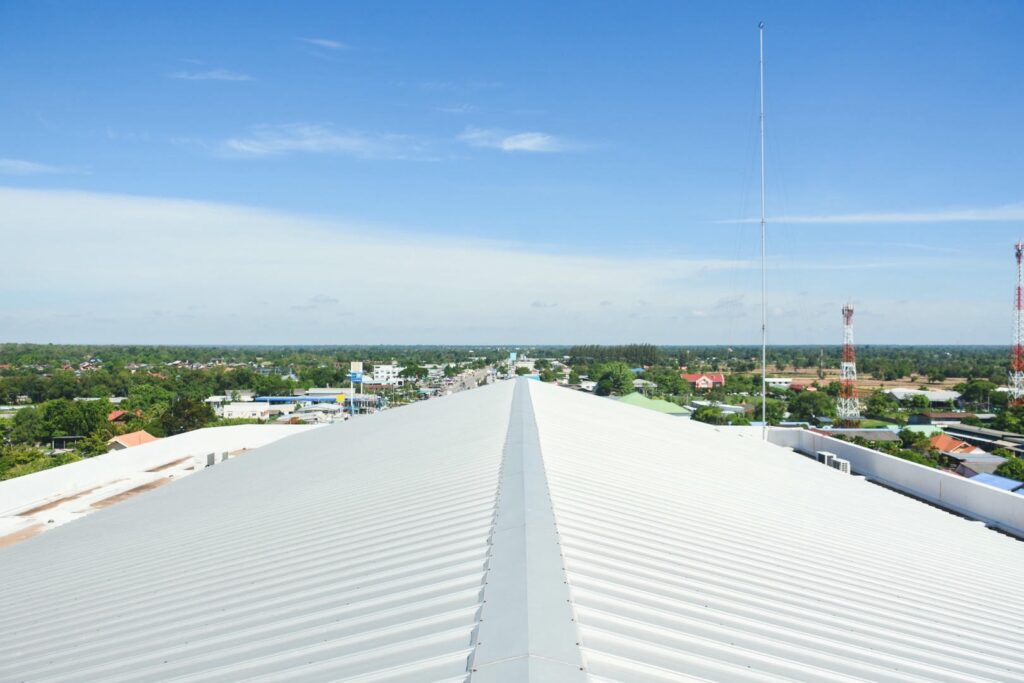
Quality Materials and Proper Installation
The quality of roofing materials and the installation process are paramount in determining the longevity and performance of a roof. Using high-quality materials and ensuring they are installed correctly can make a significant difference.
Installation Quality: Key to Roof Longevity
The way a roof is installed affects its durability and lifespan. Proper installation is essential for several reasons:
- Preventing Roof Leaks: Correct installation ensures that all components of the roof are securely fastened and sealed, reducing the risk of roof leaks.
- Enhancing Structural Integrity: Proper installation methods reinforce the roof’s structure, making it more resilient to severe weather conditions like high winds and heavy snow.
- Avoiding Frequent Repairs: A well-installed roof is less likely to require frequent repairs, saving homeowners time and money in the long run.
Choosing High-Quality Roofing Materials
Investing in high-quality roofing materials can significantly extend the roof’s life span. Here’s a look at how different materials compare:
- Asphalt shingle roof: Premium asphalt shingles offer better durability and longer warranties. They are designed to withstand harsh weather conditions and UV exposure.
- Metal Roofs: High-quality metal roofs are resistant to corrosion and can last up to 70 years. They require minimal maintenance and offer excellent protection against the elements.
- Slate and Tile Roofs: These materials are known for their exceptional longevity, often lasting over 100 years. They are resistant to fire, rot, and insects.
- Wood Shingles and Shakes: High-quality cedar and redwood shakes are naturally resistant to decay and offer a unique aesthetic appeal.
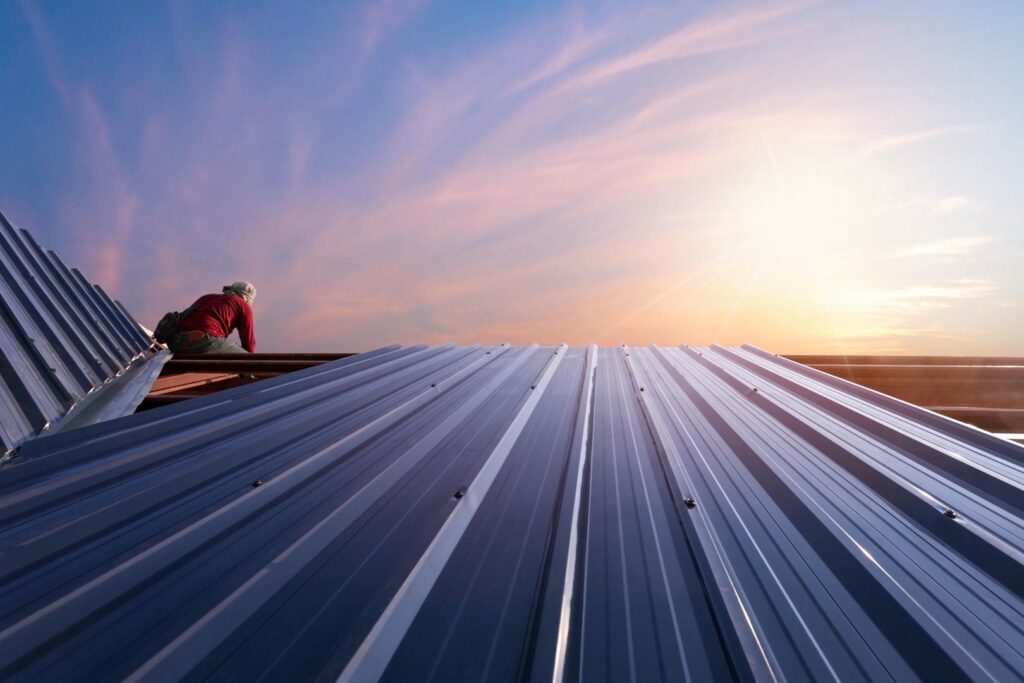
Maintaining Your Roof for Maximum Longevity
Regular maintenance is crucial for extending the lifespan of any roof. Proactive maintenance practices can prevent minor issues from escalating into significant problems, ensuring the roof remains in good condition for years.
Annual Roof Inspections
Annual roof inspections are essential for identifying potential issues early and addressing them promptly. During an inspection, a professional roofer will:
- Check for Damaged Shingles: Identifying and replacing damaged shingles prevents leaks and water damage.
- Inspect Flashing and Seals: Ensuring that the flashing around chimneys, vents, and skylights is intact helps prevent water intrusion.
- Assess Roof Ventilation: Proper attic ventilation is checked to ensure the roof’s integrity and energy efficiency.
Cleaning Gutters to Prevent Roof Damage
Clogged gutters can lead to water backup, causing damage to the roof and the home’s foundation. Regularly cleaning gutters ensures that water flows freely, preventing:
- Water Damage: Overflowing gutters can cause water to seep under the roof, leading to rot and leaks.
- Ice Dams: In colder climates, clogged gutters can contribute to ice dam formation, which can damage shingles and cause water intrusion.
Repairing Damaged Shingles Promptly
Addressing damaged shingles as soon as they are noticed can prevent more severe damage. Damaged shingles can lead to:
- Roof Leaks: Even a small crack or missing shingle can allow water to penetrate the roof, leading to leaks.
- Structural Damage: Prolonged exposure to water can weaken the roof structure and lead to costly repairs.
When to Consider Roof Replacement: Key Signs
Knowing when to replace a roof is crucial for maintaining the safety and value of a home. Here are some key signs that it might be time for a full roof replacement.
Identifying Roof Leaks and Water Damage
Roof leaks are a clear indication that the roof may need replacing. Signs of roof leaks include:
- Water Stains on Ceilings: Brown or yellow stains on ceilings are often caused by water leaking through the roof.
- Mold Growth: Persistent leaks can lead to mold growth, which poses health risks and indicates severe moisture problems.
- Damp Insulation: Wet insulation in the attic can reduce energy efficiency and indicate a roof leak.
When Shingles Show Wear and Tear
Visible signs of wear and tear on shingles can indicate that the roof is nearing the end of its life span. Look for:
- Cracked or Curling Shingles: Shingles that are cracked, curling, or missing granules need to be replaced.
- Bald Spots: Areas where shingles have lost their granules can lead to leaks and reduced roof life expectancy.
- Excessive Shingle Debris: Finding large amounts of shingle granules in gutters is a sign that the shingles are deteriorating.
Sagging Roof: Structural Concerns
A sagging roof is a serious issue that requires immediate attention. It can indicate structural problems that compromise the roof’s integrity.
- Inspecting Roof Lines: Check for sagging or uneven roof lines, which may suggest structural issues.
- Interior Signs: Inside the home, look for cracks in walls or ceilings and doors that stick, which can indicate a sagging roof.
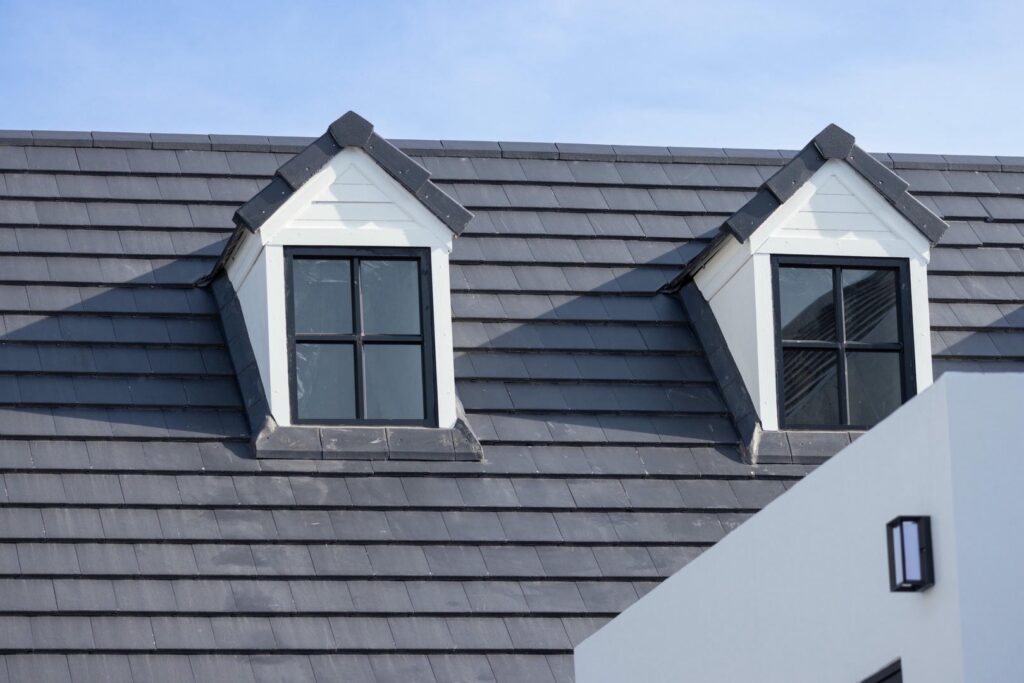
How Much Cost Roof Replacement
Replacing a roof is a significant investment, but understanding the costs involved can help homeowners budget appropriately. Here’s a breakdown of the costs associated with different roofing materials.
Comparing Roof Different Roof Materials
- Asphalt shingle roof: While asphalt shingles are cost-effective initially, premium shingles offer better durability and longer life spans, making them a worthwhile investment.
- Metal Roofs: Metal roofs have a higher upfront cost but offer exceptional longevity and minimal maintenance, resulting in long-term savings.
- Slate and Tile Roofs: These premium materials have high initial costs but their longevity and durability make them a cost-effective choice over time.
- Wood Shingles and Shakes: Wood roofs provide natural beauty but require regular maintenance, impacting long-term costs.
Investing in durable roofing material can lead to significant long-term savings. High-quality materials require less frequent repairs and replacements, reducing overall costs. Additionally, durable roofs enhance the home’s value and curb appeal.
Roofing Warranties: What to Expect
Roofing warranties provide homeowners with peace of mind by covering defects in materials and workmanship. Understanding the types of warranties available can help homeowners make informed decisions.
- Manufacturer’s Warranty: Covers defects in roofing materials. The duration and coverage vary by manufacturer and product quality.
- Workmanship Warranty: Provided by the roofing contractor, this warranty covers installation-related issues. A longer workmanship warranty indicates confidence in the contractor’s skills.
- Extended Warranties: Some manufacturers offer extended warranties that cover both materials and workmanship for an extended period, providing additional protection.
Hiring a Professional Roofing Contractors
Choosing the right roofing contractor is essential for a successful roof replacement. A professional contractor ensures quality installation and provides valuable warranties.
Choosing the Right Roofing Professional
- Credentials and Experience: Look for contractors with proper licenses, insurance, and extensive experience in roofing.
- References and Reviews: Check customer reviews and ask for references to gauge the contractor’s reliability and quality of work.
- Detailed Estimates: Obtain detailed written estimates that outline the scope of work, materials to be used, and costs involved.
Importance of Workmanship Warranties
Workmanship warranties protect homeowners from installation errors and provide peace of mind. A reliable contractor will offer a comprehensive workmanship warranty, reflecting their confidence in their work quality.
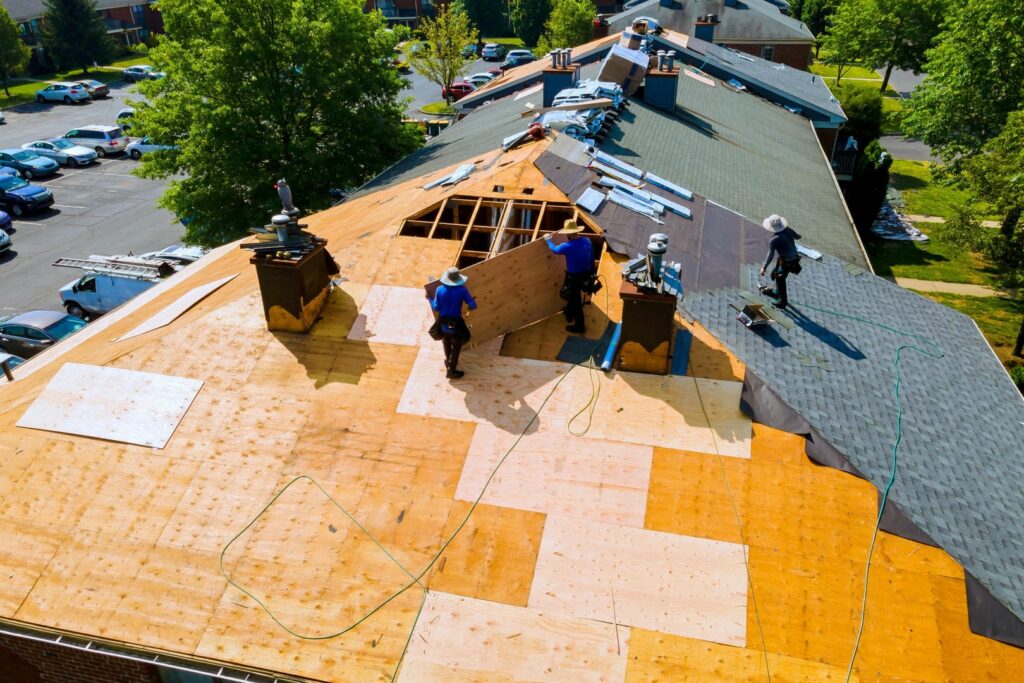
Our Recommendation for New Roof Installation in 2024
For homeowners considering a new roof installation in 2024, it’s essential to choose the right materials and contractor to ensure long-term durability and performance. With advancements in roofing technology and materials, now is an excellent time to invest in a high-quality roof that will protect your home for decades.
If you’re ready to enhance your home’s protection and aesthetic appeal with a new roof, contact Rapid Roofing. Our team of experienced roofing professionals is dedicated to providing top-quality materials and expert installation services. We can help you choose the best roofing solution for your home and ensure a long-lasting and beautiful roof for years to come.